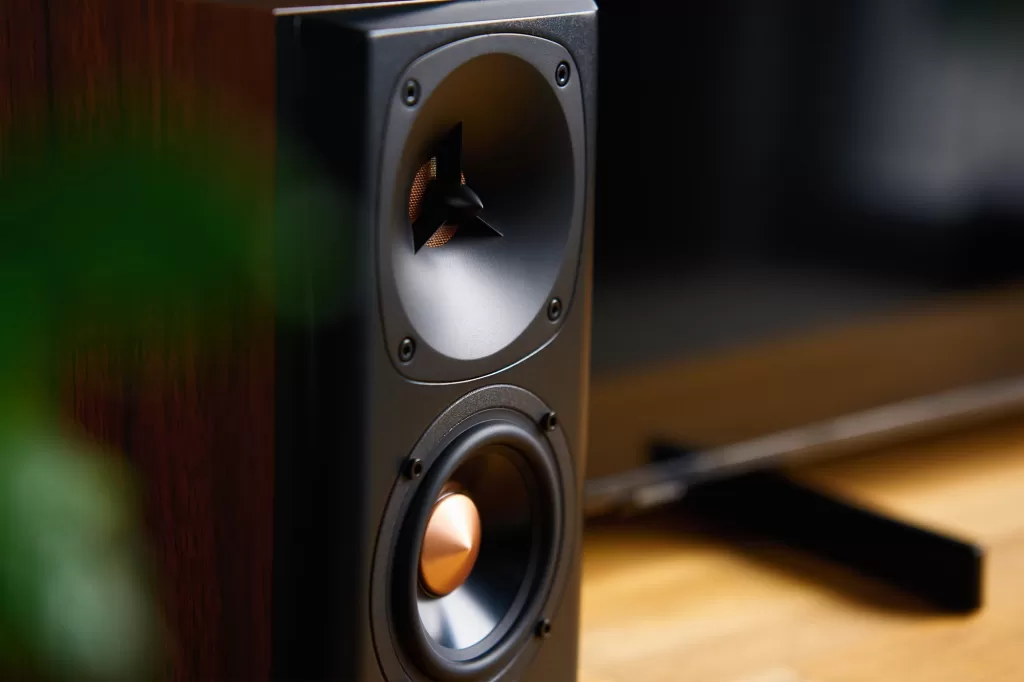
Are you an audiophile searching for the perfect speaker? Look no further – this comprehensive guide has got you covered! Choosing the right speaker is crucial to enhance your listening experience significantly. Whether you’re a music lover, a movie enthusiast, or a gamer, finding the perfect speaker that suits your needs and preferences is essential.
In this guide, we will take you through the key factors to consider when selecting a speaker. We will explore the different types of speakers available in the market, their features, and their pros and cons. From bookshelf speakers to floor-standing towers, we’ll help you understand the various options and determine which will deliver the best audio quality for your requirements.
Additionally, we’ll provide practical tips on comparing different speakers, deciphering technical specifications, and making an informed decision. By the end of this guide, you’ll be equipped with the knowledge and confidence you need to choose the perfect speaker to elevate your audio experience to new heights.
So, let’s dive in and discover the world of speakers together!
Importance of choosing the right speakers
Choosing the right speaker is crucial for any audiophile. Your selected speaker can significantly impact the audio quality and overall listening experience. The wrong choice may result in distorted sound, poor bass response, or limited frequency range. On the other hand, selecting a high-quality speaker that matches your preferences can immerse you in a world of rich, detailed sound.
To ensure you make the right choice, it’s essential to consider factors such as room size, listening preferences, and budget. These factors will help you narrow your options and find a speaker that meets your needs. Additionally, understanding speaker specifications and how to compare different models will further assist you in making an informed decision.
Understanding speaker specifications
When it comes to speakers, there are various technical specifications to consider. These specifications provide valuable information about the speaker’s performance and capabilities. Understanding these specifications will help you determine whether a particular speaker suits your requirements.
One of the most important specifications to consider is frequency response. This specification tells you the range of frequencies the speaker can reproduce. A broader frequency response indicates that the speaker can reproduce a broader range of sounds, producing more accurate and detailed audio.
Another crucial specification is the impedance. Impedance measures the electrical resistance the speaker presents to the amplifier. It is essential to ensure that the speaker’s impedance matches the amplifier’s output impedance to achieve optimal performance.
Sensitivity is another key specification to consider. It measures the speaker’s efficiency in converting power into sound. A higher sensitivity rating indicates that the speaker can produce a louder sound with less power.
Types of speakers – bookshelf, floor standing, in-wall, and in-ceiling

Several types of speakers are available in the market, each with its advantages and disadvantages. Understanding these types will help you choose the speaker that best suits your needs and preferences.
Bookshelf speakers are compact and designed to be placed on a shelf or mounted on a stand. They are a popular choice for small to medium-sized rooms and offer excellent sound quality for their size. Bookshelf speakers are versatile and can be used in stereo setups or as part of a home theater system.
Floorstanding speakers, also known as tower speakers, are larger and more potent than bookshelf speakers. They provide a full-range sound experience and are ideal for larger rooms or those who want a more immersive audio experience. Floorstanding speakers often feature multiple drivers for enhanced bass response and overall performance.
In-wall and in-ceiling speakers are designed to be installed directly into the walls or ceiling of a room. These speakers are a great option to maintain a clean and clutter-free look in your space. In-wall and in-ceiling speakers are typically used as part of a whole-house audio system or as rear surround speakers in a home theater setup.
Factors to consider when choosing a speaker – room size, listening preferences, budget

When choosing a speaker, it’s essential to consider factors such as room size, listening preferences, and budget. These factors will help you narrow your options and find a speaker well-suited to your requirements.
Room size plays a crucial role in determining the type and size of the speaker you should choose. Larger rooms may require more powerful speakers with more significant drivers to fill the space with sound. On the other hand, smaller rooms may benefit from compact bookshelf speakers that offer excellent sound quality without overwhelming the space.
Listening preferences are also essential to consider. If you enjoy music with deep bass, you may opt for speakers with a solid low-frequency response. If you’re more focused on dialogue clarity for movies and TV shows, speakers with a clear midrange and detailed high-frequency response may be more suitable.
Budget is another crucial factor to consider. Speakers come in a wide range of price points, and it’s essential to determine how much you’re willing to spend. Remember that higher-priced speakers often offer better build quality, more advanced features, and superior sound performance. However, there are also budget-friendly options available that can deliver impressive audio quality for the price.
Speaker brands to consider – Bose, Sonos, Klipsch, KEF
When choosing a speaker, there are several reputable brands to consider. These brands have established themselves as leaders in the industry and are known for producing high-quality speakers that deliver exceptional sound performance.
Bose is a well-known name in the audio industry and is synonymous with premium sound quality. Bose speakers are known for their sleek design, advanced features, and immersive sound experience. Whether you’re looking for a compact Bluetooth speaker or a high-end home theater system, Bose offers many options.
Sonos is another famous brand that has revolutionized the way we listen to music at home. Sonos speakers are known for their wireless connectivity, multi-room capability, and seamless integration with popular streaming services. With Sonos, you can easily create a whole-house audio system and enjoy synchronized music throughout your home.
Klipsch is a brand that is synonymous with power and performance. Klipsch speakers are known for their dynamic sound, strong bass response, and overall audio excellence. Whether you’re a music enthusiast or a home theater buff, Klipsch speakers deliver a captivating listening experience.
KEF is a brand that focuses on innovation and cutting-edge technology. KEF speakers are known for their Uni-Q driver technology, which provides a comprehensive and accurate soundstage. KEF offers a range of speakers that cater to different needs and budgets, from bookshelf speakers to high-end floor-standing models.
Speaker placement and positioning tips
Once you’ve selected the right speaker, it’s essential to ensure proper placement and positioning for optimal sound quality. Here are some tips to help you get the most out of your speakers:
1. Position the speakers at ear level: For the best listening experience, it’s recommended to position the speakers at ear level. This ensures that the sound reaches your ears directly and reduces unwanted reflections.
2. Create a balanced soundstage: For stereo setups, position the speakers at an equal distance from the listening area to create a balanced soundstage. This will help to achieve a broader and more immersive sound experience.
3. Consider speaker toe-in: Experiment with toeing-in the speakers slightly towards the listening area. This can help improve imaging and focus the sound toward the listener.
4. Minimize reflections: Avoid placing speakers too close to walls or corners, which can cause unwanted reflections and affect the sound quality. Positioning the speakers away from walls can help reduce these reflections and improve clarity.
5. Use speaker stands or isolation pads: If you’re using bookshelf speakers, consider using speaker stands or isolation pads to minimize vibrations and improve sound quality. This can help reduce unwanted resonances and enhance the overall listening experience.
By following these placement and positioning tips, you can ensure that your speakers deliver the best possible sound quality and enhance your overall listening experience.
Features to look for in a speaker – wireless connectivity, multi-room capability, voice control
In addition to sound quality, speakers today have various features that enhance your listening experience and provide added convenience. Here are some features to consider when choosing a speaker:
1. Wireless connectivity: Many speakers now offer wireless connectivity, allowing you to stream music directly from your smartphone, tablet, or computer. This eliminates the need for messy cables and provides greater flexibility in speaker placement.
2. Multi-room capability: If you want to enjoy music throughout your home, consider speakers with multi-room capability. These speakers can be connected to create a whole-house audio system, allowing you to play synchronized music in different rooms.
3. Voice control: Voice-controlled speakers have become increasingly popular recently. You can control your speaker using voice commands with built-in virtual assistants like Amazon Alexa or Google Assistant. This adds a new level of convenience and allows you to control your music hands-free.
4. App integration: Some speakers have dedicated apps that provide additional features and customization options. These apps allow you to fine-tune the speaker’s settings, create playlists, and access streaming services directly from your device.
5. Smart home compatibility: Consider speakers compatible with popular smart home platforms if you have a smart home setup. This lets you integrate your speaker with other smart devices and control them from a single interface.
When selecting a speaker, consider which features are most important to you and align with your lifestyle and preferences. These features can significantly enhance your listening experience and provide added convenience and flexibility.
Speaker reviews and recommendations
With so many speakers available in the market, it can be overwhelming to choose the right one. Reading reviews and recommendations from experts and other audiophiles can help you make an informed decision. Here are some reputable sources to consider:
1. Online tech publications: Websites like CNET, TechRadar, and Digital Trends provide detailed speaker reviews, highlighting their pros and cons, sound quality, and features. These reviews are often conducted by audio experts and provide valuable insights into the performance of different speakers.
2. Audiophile forums: Joining online audiophile forums can be a great way to gather information and recommendations from fellow enthusiasts. These forums are filled with passionate audiophiles eager to share their knowledge and experiences.
3. User reviews: Reading user reviews on e-commerce websites like Amazon can provide real-world insights into the performance and reliability of a speaker. Pay attention to reviews from users with similar preferences and requirements to better understand how the speaker will perform in your specific setup.
4. Professional audio dealers: Visiting a professional audio dealer can allow you to listen to different speakers in person and get expert advice. These dealers often have dedicated listening rooms where you can experience the speakers firsthand and make a more informed decision.
By seeking out reviews and recommendations, you can gain valuable insights into the performance and features of different speakers and make a more confident choice.
Comparison of different speaker models
Let’s compare some popular speaker models based on their features, sound quality, and overall performance to further assist you in your decision-making process.
1. Bose SoundTouch 30: Offering powerful sound and wireless connectivity, the Bose SoundTouch 30 is a versatile speaker with impressive audio performance. It features multi-room capability, allowing you to expand your system and enjoy synchronized music throughout your home.
2. Sonos Play:5: The Sonos Play:5 is a high-quality speaker with excellent sound clarity and depth. It supports wireless streaming and multi-room capability, making it an excellent choice for creating a whole-house audio system.
3. Klipsch RP-280F: Known for their dynamic sound and powerful bass, the Klipsch RP-280F floorstanding speakers are popular for home theater setups. They feature Tractrix horn technology, enhancing detail and clarity and creating a captivating audio experience.
4. KEF LS50 Wireless: The KEF LS50 Wireless speakers combine elegant design with exceptional sound quality. They offer wireless connectivity, multi-room capability, and integrated amplification, making them a convenient and high-performance option for audiophiles.
Remember that this is just a small selection of speakers, and many other models are available in the market. It’s essential to consider your specific requirements, preferences, and budget when comparing different speakers to find the one that best meets your needs.
Conclusion and final tips for choosing the perfect speaker
Choosing the perfect speaker is a personal journey that requires careful consideration of various factors. By understanding your room size, listening preferences, and budget, you can narrow your options and find a speaker that suits your specific requirements.
When comparing different speakers, consider technical specifications such as frequency response, impedance, and sensitivity. These specifications will give you valuable insights into the speaker’s performance and capabilities.
Consider the different types of speakers available, such as bookshelf, floor-standing, in-wall, and in-ceiling speakers, and determine the most suitable for your space and preferences.
Explore reputable speaker brands like Bose, Sonos, Klipsch, and KEF, and read reviews and recommendations from experts and fellow audiophiles. This will help you gain insights into the performance and reliability of different speakers.
Lastly, don’t forget to consider additional features like wireless connectivity, multi-room capability, voice control, and smart home compatibility. These features can significantly enhance your listening experience and provide added convenience.
By following these tips and considering all the factors, you’ll be well-equipped to choose the perfect speaker to elevate your audio experience. Happy listening!
